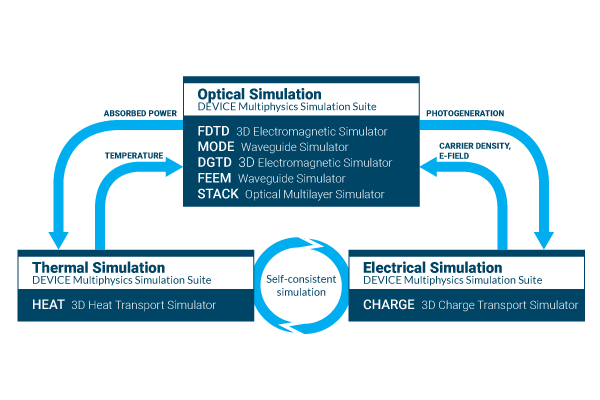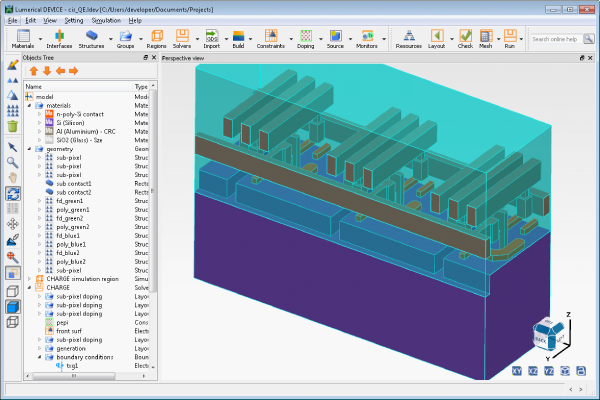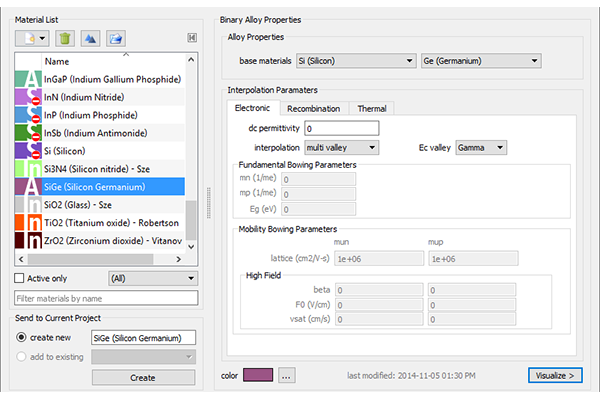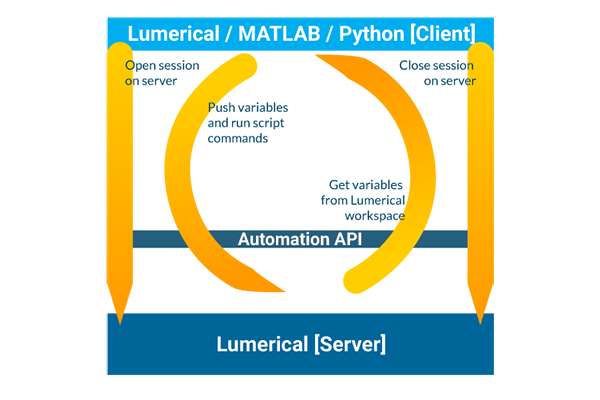- info@advinno.com
- Mon - Fri: 9.00 am - 6.00 pm
We are creative, ambitious and ready for challenges! Hire Us
We are creative, ambitious and ready for challenges! Hire Us
We have 20+ years of experience in delivering superior and innovative products
22, Sin Ming Lane, #05-75 Midview City Singapore 573969
info@advinno.com
(+65) 6777-2240 / 6570 6086
Built on the finite element drift-diffusion method, CHARGE provides designers with the correct tools for comprehensive charge transport simulation in active photonic and optoelectronic semiconductor devices. CHARGE self-consistently solves the system of equations describing electrostatic potential (Poisson’s equations) and density of free carriers (drift-diffusion equations). Automatic and guided mesh refinement tools are provided to achieve accuracy while minimizing computational effort.
CHARGE is a solver within Lumerical’s DEVICE Multiphysics Simulation Suite, the world’s first multiphysics suite purpose-built for photonics designers. The DEVICE suite enables designers to accurately model components where the complex interaction of optical, electronic, and thermal phenomena is critical to performance. As part of the Finite Element IDE, designers can quickly analyze complex active devices while benefiting from Lumerical’s industry-leading usability, performance, and accuracy





Lumerical tools are interoperable through the Lumerical scripting language, Automation API, and Python and MATLAB APIs.
